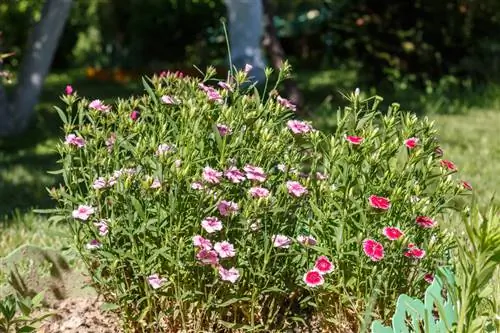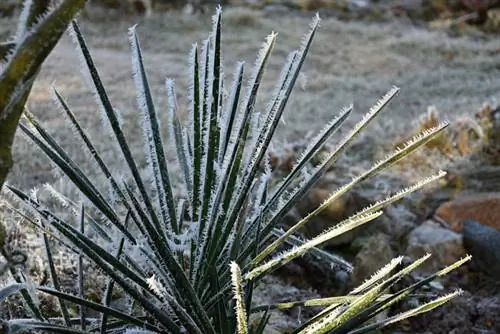- Author admin [email protected].
- Public 2023-12-16 16:46.
- Last modified 2025-01-23 11:20.
In the Mediterranean region, the home of the oleander (Nerium oleander), it is very hot in the summer, while the winters remain mild - low temperatures like here, perhaps even snow and ice, are not found in the south of Italy or Spain. The oleander is perfectly adapted to this climate, which is why the popular ornamental shrub can only tolerate a maximum of minus five degrees Celsius over a very short period of time.

What to do if the oleander is frozen?
If an oleander has frozen, you can cut back the brown, dried shoots and hope that it will sprout again in spring with the roots intact. Protect the oleander from frost in winter by overwintering it in a bright, frost-free room.
Care properly for oleanders with frost damage
Therefore, it is not surprising that oleanders that have overwintered outside often suffer frost damage. The frozen shoots look brown and dried out, which is why you should shorten them heavily with clean and sharp secateurs (€14.00 on Amazon). If the entire bush appears frozen, you can cut it back to just above the ground and hope that it will sprout again in the spring. When pruning, remember that oleander generally only sprouts from the shoot tip. So don't leave long and bare stems standing, but rather shorten them. You should also always make sure that the roots of the oleander are always nice and warm.
There is no hope with frozen roots
As long as the roots of the plant have not suffered any frost, there is always hope for the flowering shrub. If the roots are intact, the oleander is able to regenerate again and again and sprout new shoots. However, as soon as the roots have frozen, there is no longer any hope - in this case the bush has irrevocably died and should be disposed of.
Protect oleander effectively from frost
You can achieve this by primarily packing the planter neatly with warming material and, if possible, placing the oleander in a protective corner (for example under an eaves or similar) on a house wall. In mild winters, you can also bury the shrub in the garden (in a planter, of course!). However, it is important to keep a close eye on the temperatures and weather forecasts: ground frost is a death sentence for the roots and therefore for the entire shrub. In any case, it's best to overwinter the plant at around five degrees Celsius in a bright and frost-free room.
Tip
As soon as you have cut back the frozen oleander, you should fertilize it heavily in spring. The plant needs a lot of nutrients for new growth.






